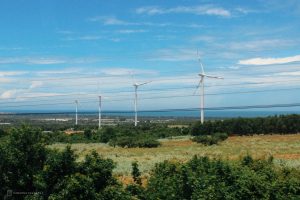In December, Vietnam and a coalition of international partners including the United Kingdom, the United States, the European Union, and Japan announced a $15.5 billion Just Energy Transition Partnership designed to accelerate the reduction of carbon emissions and increase the uptake of renewable energy. The plan calls for Vietnam to reach peak emissions in 2030 and net zero emissions by 2050. According to the official policy statement released by the U.K. government, the transition will be implemented “with the cooperation and support of the international community, including developed countries, both in terms of finance and technology transfer.”
This follows closely on the heels of a Just Energy Transition plan announced at the G-20 between Indonesia and a similar international coalition led by Europe, the United States and Japan. It’s still early days but the basic structure of Vietnam’s plan hews closely to the Indonesian version. $7.75 billion, or half of the total package, will come from public sector finance. The document specifies that this public sector finance “should be on more attractive terms than Viet Nam could secure in the capital markets.” I don’t believe similar language was included in Indonesia’s plan.
As in the Indonesian plan, Vietnam’s Just Energy Transition Partnership envisions the remaining half of the package coming from a group of commercial banks which will “work to mobilize and facilitate at least $7.75 billion in private finance, subject to mobilization of the catalytic public sector finance.” This means the basic structure between the two plans is largely the same: public sector finance – such as grants and concessional loans from governments, state-owned banks and multilateral development banks – will serve to jump-start investment in green energy projects, and for early retirement of existing coal-fired plants.
Contingent on the success of this public sector finance, the private sector will work to mobilize an additional $7.75 billion in investment and financing on terms that more closely reflect market conditions. As in the Indonesian Just Energy Transition plan, this part of the package remains rather vague and was a bit of a sticking point as the terms of the deal were being worked out in recent months. Reports began emerging that Vietnam was holding out for language that would ensure the package consisted of more grants and less commercial rate lending.
We do see in the released statement some carefully couched language about how the plan will “not divert critical development assistance away from existing development funding” and that it will “support the needs of Viet Nam’s just energy transition in accordance with the national framework of public debt and external debt management.” Clearly, Vietnamese policymakers are worried that the fund will be used by foreign creditors to load up the government with debt, especially market rate debt. And they fought for, and seem to have secured, some assurances that the risk would be more evenly spread around.
Of course, this plan is still in its initial phase. The exact terms and structure of both the public and private sector financing will be key in determining how this vision is ultimately translated into reality. We cannot really say, at this juncture, what the Just Energy Transition Partnership in either Vietnam or Indonesia will end up looking like over the three to five year time frame envisioned by the drafters.
We can say one thing, however. China is not involved in either the Indonesian or the Vietnamese plan. Both funds have been set up and spearheaded by coalitions that include the EU, the U.S., and Japan. China has been a major investor in building out the region’s coal-fired capacity in recent years so one way of interpreting this is that the U.S. and its allies in Europe and Asia are looking to offer strategic partners such as Indonesia and Vietnam an off-ramp for coal. And they are doing so by mobilizing attractive financing, technology transfer, and capacity-building packages that offer a mix of market and non-market incentives.
Is this a coordinated effort on the part of the U.S. and its allies to help major emerging markets in the region develop next generation energy capabilities and improve their positions on the global technological frontier? And is it part of a deliberate effort to exclude China from participating? These funds will help the U.S. and its allies increase engagement in two fast-growing regional energy sectors, an area where American companies have not been major players in recent years. I don’t like to read every political and economic development in Southeast Asia through the lens of U.S.-China rivalry, but this does seem like a situation where there might be some bigger geostrategic implications at play.

































